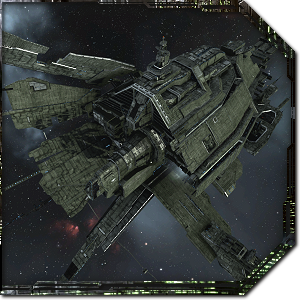
In the previous edition of EVE Evolved, I looked at how the state of PvP in EVE Online has changed since the Aegis Sovereignty overhaul and asked whether it’s been a success. Players quickly started adapting to the new system and reported getting a lot more fights, with some smaller alliances even managing to capture space from established entities. Small fleets found themselves able to kick down another alliance’s space doors and become a credible threat, being rewarded with either a good fight or an opportunity to capture something. Station capture events also naturally became beacons to third parties that signaled a big fight was about to go down, and huge alliances discovered that they could no longer easily hold space they don’t use. The day-to-day PvP in alliance territories seemed be massively improved, but we had yet to see an actual turf war using the new mechanics
Since then we’ve got our first taste of a real territorial war with the battle for the Providence region. Alliance theorycrafters have been drawing up experimental fleet doctrines and battle plans since Aegis landed, and at the end of August we got to see them tested on a real battlefield. The Imperium announced plans to mobilise its forces to conquer Providence as a way of testing new strategies and gaining experience with the new sovereignty mechanics, and it wasn’t long before other major groups like TEST Alliance and Legion of xXDEATHXx joined the fray. The results of the battle were very illuminating, with people having a lot more fun than expected and the defender’s advantage being thoroughly tested. We also saw how capital ships have lost their roles in today’s territorial warfare, which was expected as CCP has already stated that a full capital ship rework is coming.
In this edition of EVE Evolved, I look at how the recent war in Providence played out and give my views on why capital ships have lost their roles in the new territorial warfare dynamic.
 What’s the deal with Providence?
What’s the deal with Providence?
The Providence region in the south of EVE has been an interesting and heavily populated area throughout EVE‘s history, and it’s all down to the local geography. There are multiple paths into the region from empire space (including two direct stargate links from highsec), making the region easily accessible by pirates and very hard for any alliance to lock down. The star systems in the area are also kind of crap compared to other regions, so the big alliances tend to hold territory elsewhere and leave Providence to be owned by smaller entities.
Today’s Providence power block is a loose coalition dominated by CVA (one of the game’s oldest sov-holding alliances) that operates a “Not Red, Don’t Shoot” engagement policy, essentially allowing its space to be used freely by neutral pilots. Providence was likely selected as a target for this war because it seems like a soft empire that only exists because a large coalition hasn’t come in to kick over the sandcastles in a while.
The region is also populated by the same kind of small but active alliances that the new sov system is designed to promote, so any strategy that works well in Providence is probably a solid one to use going forward. CVA in particular has a rich and long history of living in the region and has reconquered it after being evicted in the past, so it was guaranteed that they’d fight back rather than giving up and moving elsewhere. Fighting a war in providence was a relatively risk-free option that would be a strong indicator of how wars will play out elsewhere.
 How did the war pan out?
How did the war pan out?
In the past, a coalition of the size of The Imperium could have swept over any region en masse and dismantled all of the sovereignty infrastructure in a few days. Most fights would have gone down without opposition and the only thing that could stop them would be terminal boredom or a coalition of roughly equal force deciding to intervene for a laugh. The war for Providence has provided strong evidence that throwing overwhelming force at an enemy no longer guarantees success. The battle reports coming out of it and the subsequent analysis have made for some very engrossing reading.
Tarek Raimo over at Crossing Zebras has been following the war closely and delivered a fantastic after-action report on the campaign that I’d urge everyone to read through. As expected, battles that used to be concentrated in a single system at a time have now been spread out over multiple targets simultaneously. A single uber fleet commander can no longer be responsible for an entire invasion, so each alliance now hosts its own fleet with its own dedicated commander, scouts, and covert ops pilots. The result is a much greater opportunity for people to contribute in ways other than just being front line grunts pressing F1 when they’re told to.
Throughout the four day test war, The Imperium managed to destroy about half of the infrastructure hubs in the region and captured a handful of star systems. The Providence holders were able to hold out and even come out on top in plenty of individual fleet engagements, and managed to quickly recapture any lost territory. Had this been a real war to capture and hold space, The Imperium could have pushed its numbers advantage and likely would have won in the end. The interesting thing was that the defender’s advantage made enough of a difference to slow The Imperium down and turn an attempt to steamroll the region into a drawn out war of attrition. It seems there are no shortcuts to victory in Aegis sovereignty against a sufficiently entrenched foe.
 What happened to capital ships?
What happened to capital ships?
The war for Providence showed that ISK isn’t the deciding factor in the small to mid sized fleet engagements that typify the new sovereignty system. The Imperium threw expensive fleets of Machariels and Tengus into the meat grinder and CVA struck them down with cheap tech 1 battlecruisers and cruisers. The style of combat made battleship gangs impactical, and there isn’t much use for capital ships in the new capture mechanic. Fleets of dreadnoughts were essential under the old system that required players to shoot at structures for hours on end, but they have no place in Aegis sovereignty.
Carriers and supercapitals are still strategic chips that an alliance can play to escalate any individual engagement, but the new system puts less emphasis on individual battles and jump fatigue has reduced the mobility of capital gangs. Aegis sovereignty seems to favour strategies involving highly mobile gangs that can quickly redirect from one target to another, and fleets with high alpha damage are proving very effective. The lack of battleships combined with the spiky alpha damage in the current fleet doctrines makes carriers a lot less useful as remote repairing platforms, and if nobody’s deploying carriers and dreadnoughts then there’s not a hell of a lot of use for supercarriers or titans.
The killboards show that alliances are still throwing capital ships at each other in skirmishes every day, but until the capital ship rebalance is released they’ll likely stay pretty irrelevant to sovereignty warfare. What we need now is new roles for capital ships that create more strategic options and targets for attack at the same time, but that’s a topic for another article.
 The war for Providence was essentially striking a match in a test tube, but it gives us clues about what war will look like when New Eden catches fire for real. The results are pretty exciting, with fights spread over a larger number of systems and a well dug-in defender with high system indices having a distinct advantage that can help level the playing field a bit against a superior force.
The war for Providence was essentially striking a match in a test tube, but it gives us clues about what war will look like when New Eden catches fire for real. The results are pretty exciting, with fights spread over a larger number of systems and a well dug-in defender with high system indices having a distinct advantage that can help level the playing field a bit against a superior force.
The game’s biggest military coalition descended on Providence with a clear advantage in finances and number of pilots, and in the end it wasn’t a one-sided war. Reports from both sides also suggest that the attackers and defenders had more fun in those four days than in months of structure grinding and capital ship blobbing under the old system. That alone signals that Aegis sovereignty has been a success and should serve as a good foundation for the upcoming release of citadel structures, player-built stargates and other empire-building goodies. While there’s clearly work still to be done, the future is looking very bright for territorial warfare in EVE Online.
 EVE Online expert Brendan ‘Nyphur’ Drain has been playing EVE for over a decade and writing the regular EVE Evolved column since 2008. The column covers everything from in-depth EVE guides and news breakdowns to game design discussions and opinion pieces. If there’s a topic you’d love to see covered, drop him a comment or send mail to brendan@massivelyop.com!
EVE Online expert Brendan ‘Nyphur’ Drain has been playing EVE for over a decade and writing the regular EVE Evolved column since 2008. The column covers everything from in-depth EVE guides and news breakdowns to game design discussions and opinion pieces. If there’s a topic you’d love to see covered, drop him a comment or send mail to brendan@massivelyop.com!














